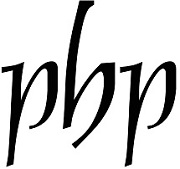Distributed for Paul Holberton Publishing
Chinese and Japanese Porcelain in the Frits Lugt Collection
A catalog raisonné of historical pieces of porcelain from China and Japan featuring photos and essays.
When the famous Dutch art historian and connoisseur Frits Lugt (1884–1970) and his wife Jacoba Klever (1888–1969) decided to present their collections in the Hôtel Turgot in Paris, Chinese porcelain ranked among their priorities. They intended to give the French public an impression of Dutch Golden Age interiors, and a porcelain cabinet had traditionally been part of Dutch material culture. The result is a small but exquisite collection of high-quality Chinese porcelain from the sixteenth to the late eighteenth centuries.
In Chinese and Japanese Porcelain in the Frits Lugt Collection, each of the 125 pieces is described in detail and placed in a scholarly context. Special attention is paid to iconography, inscriptions, and marks. A longer, informative essay elaborates on the history of the collection and shorter essays introduce each of the six sections into which the catalogue is chronologically divided. Every object has been photographed and reproduced from multiple angles, including the base.
When the famous Dutch art historian and connoisseur Frits Lugt (1884–1970) and his wife Jacoba Klever (1888–1969) decided to present their collections in the Hôtel Turgot in Paris, Chinese porcelain ranked among their priorities. They intended to give the French public an impression of Dutch Golden Age interiors, and a porcelain cabinet had traditionally been part of Dutch material culture. The result is a small but exquisite collection of high-quality Chinese porcelain from the sixteenth to the late eighteenth centuries.
In Chinese and Japanese Porcelain in the Frits Lugt Collection, each of the 125 pieces is described in detail and placed in a scholarly context. Special attention is paid to iconography, inscriptions, and marks. A longer, informative essay elaborates on the history of the collection and shorter essays introduce each of the six sections into which the catalogue is chronologically divided. Every object has been photographed and reproduced from multiple angles, including the base.

